Estimated reading time: 28 minutes
Are you looking for meaningful transformation? This empowering story reveals how I developed from a wounded healer to a spiritual warrior by embracing pivotal life lessons.
It’s taken me five years to share this story, revealing my own personal growth journey.
I hope this story helps you unlock your potential and start your journey to self-discovery today!
Table of contents
- Background
- Native American Proverb
- My Story
- Life-Changing Experience
- Choosing My Identity
- My Path Forward
- Continued Personal Growth
- Time to Clean up My Life!
- Abstinence
- Travel
- Raising Women
- 7 Pivotal Life Lessons
- Life Lesson One: Understand Your Triggers
- Life Lesson Two: Facing Your Fears Head-On
- Life Lesson Three: Embrace Self-Love and Compassion
- Life Lesson Four: Develop an Awareness of the Universe Around You
- Life Lesson Five: Practice Mindful Living Every Day
- Life Lesson Six: Empower Yourself
- Life Lesson Seven: Courageously Live Your Legacy
- Summary
- Related Topics
- References
Background
The term “wounded healer” has been used in various cultural contexts and is defined in various cultures.
Ultimately, the meaning is consistent across cultures, and each healer uses their life lessons to help others.
Four explanations of a wounded healer in practice are:
- Jungian Theory of “Wounded Healer”
- The Shaman
- Traditional Healer (Medicine Man or Medicine Woman)
- Elders
Wounded Healer
In 1951, the famous Swiss psychologist Carl Jung introduced the concept of the “wounded healer.”
According to Jung, a healer who has experienced and overcome personal trauma and suffering uniquely helps others in their own healing journeys by sharing life lessons.
Jung believed experiencing a “disease of the soul” is an advantage for a healer, as it provides a deep understanding of the pain and struggles their patients are going through.
Through their healing process, wounded healers gain valuable insights and wisdom to assist others in their healing journeys.
This concept highlights the importance of self-reflection and personal growth for those who aspire to help others in their own healing journeys.
Shaman
The shaman is a type of healer who has undergone personal struggles and battled their own inner turmoil, earning the title of “wounded healer.”
They possess the gift of clairvoyance and communication, enabling them to interact with spirits and animal guides to help relieve others of their suffering.
Traditional Healer
A traditional healer and spiritual guide who caters to Indigenous communities in the Americas is commonly known as a Medicine Man or Medicine Woman.
The various cultures within these communities have their own unique terminologies, expressed in their respective languages, to refer to the spiritual healers and ceremonial leaders within their particular cultural context.
Elders
In First Nations communities across Canada, we have Elders to guide us through our stages of life.
Elders are the source of wisdom and leadership in our communities and offer a wealth of knowledge to help us become who we are meant to be in this life as we prepare for the next.
They share their own experiences and life lessons to help us become clear in our focus and path.
Although I had visited and worked with Elders throughout my life, I first met with Elders in southern Alberta, who helped me begin my healing journey in 2018.
Native American Proverb
There is a well-known Native American proverb that speaks to the idea of the “wounded healer.”
“The soul would have no rainbow if the eyes had no tears.”
This proverb suggests that through our struggles and hardships, our “wounds,” we gain wisdom and insight that we can use to help others.
Only by experiencing pain and suffering can we truly empathize with others going through similar experiences and offer them the guidance and support they need through sharing our life lessons.
The wounded healer has faced their own personal struggles and has emerged from those struggles with a deeper understanding of themselves and the world around them.
They use their own experiences to help others who are struggling to guide them on their own path to healing.
This proverb is a powerful reminder that our wounds and struggles are not something to be ashamed of or to hide from but rather something to embrace and learn from.
- We become stronger and more compassionate by embracing our own pain and suffering.
- We use our experiences to help others who are going through similar struggles.
My Story
The journey from being a wounded healer to a spiritual warrior is a transformative and life-changing experience.
It was a journey of deep healing, personal growth, and spiritual awakening that helped me tap into my true potential and become a more powerful and authentic healer.
Early in my career, I was drawn to healing work as a way of helping others, but I often neglected my needs and struggled to maintain my sense of balance and well-being.
As a wounded healer, I struggled with my own wounds and traumas and often felt like I was carrying the world’s weight.
Over time, however, I realized my wounds were not a liability but a source of strength and wisdom.
Through my own healing journey, I learned to embrace my vulnerabilities and use them as a source of compassion and empathy for others.
I also began cultivating a deeper connection to my spiritual self and tapping into a source of inner strength and resilience I had never known before.
Personal Growth Journey
As I continued to grow and evolve, I felt a shift in my perspective and my approach to healing work.
I began to see myself not as a wounded healer but as a spiritual warrior.
I saw myself as someone who had faced the darkness and emerged stronger and more resilient, with a deep sense of purpose and a commitment to serving others.
Spiritual Warrior
As a spiritual warrior, I approach healing work with a new sense of confidence and power.
I draw on my experiences of transformation and growth to guide and support others on their journeys of healing and self-discovery.
Sharing life lessons, I see my role not as fixing or healing others but as holding space for their transformation and growth.
Empowering them to tap into their inner strength and wisdom.
Life-Changing Experience
The journey from being a wounded healer to a spiritual warrior was not easy, but it was deeply rewarding and life-changing.
It helped me tap into my inner strength and resilience and embrace my own wounds and vulnerabilities as a source of power and wisdom.
Through self-discovery, I became a more effective and authentic healer with a deeper sense of purpose and a commitment to serving others compassionately and empoweringly.
As I continue my journey as a spiritual warrior, I am grateful for the life lessons and experiences that have brought me to this point.
I am committed to living my life purposefully and serving others with compassion, empathy, and deep respect for their own unique paths and journeys.
Feeling Unfulfilled
I started seeing a psychologist early on in my career in 2000.
As I taught post-secondary students about helping relationships, I always recommended anyone in the helping field have an impartial third party to process experiences.
A psychologist or mentor helps us unpack and make sense of our roles as helpers.
Despite my weekly visits with my psychologist, I felt lost and unfulfilled.
While the therapy sessions were helpful in some ways, I knew something was missing. I craved a deeper, more spiritual connection to help me find true healing.
That’s when I decided to seek spiritual guidance from First Nations Elders.
Although I was always aware of the presence of Elders in spiritual healing, I had never sought out traditional practices as a source of healing.
Seeking Traditional Healing
Growing up with my Kokums (grandmothers), I had always been drawn to their deep reverence for the natural world and their wisdom about the interconnectedness of all things.
I remember my aunt always offering tobacco when fishing or picking blueberries. This is a sign of gratitude for Mother Earth and the sacrifice to provide us sustenance.
Feeling lost after massive changes in my life, I needed to follow my heart and seek out the wisdom of the Elders to reconnect with my roots and truly help me on my journey of coming home to myself.
So, I embarked on my own journey, seeking Elders who could offer me guidance and wisdom.
Embracing Wisdom
A friend in our community was active in offering others traditional ceremony experiences to celebrate our culture and provide healing opportunities to those in need.
I reached out to him, sharing my story and what I sought in my life. He understood and coordinated a meeting with an Elder to provide guidance on what may be helpful in my situation.
We met about a week later at a café in a small town outside of our city. To this day, I cannot fully describe the experience as it was powerful, heartwarming, and reassuring.
The Elder we met had his own story to share, and after sharing mine, he eloquently and compassionately told me his.
In our discussions, the message was clear.
We all must choose our identity in this life.
Once we become clear on our identity, we choose our path forward.
Choosing My Identity
I grew up in a multicultural home. My parents were of different ethnicity, deeply embedded in their languages and cultures, yet we only spoke English at home.
My dad was Russian, and my mom is Cree Metis (First Nations).
I have only ever known how to exist between worlds. However, being on the fringe has given me the gift of impartiality.
My sense of being an outsider is likely why my first career choice was to be a police officer.
I then landed in mediation practice and eventually teaching. Today, as I wind down my teaching career, I am a writer. Each on the outside in their own way.
The Elder told me that I must choose an identity to find healing.
He also shared a story about how the source of my suffering, despair, and uncertainty was from living between worlds. Choosing one does not mean abandoning another.
He explained further that whichever identity I choose, he will welcome me to a Sweat Lodge Ceremony.
We ended our meeting, and I left feeling refreshed and clearer about the task ahead.
I was at a crossroads in life and needed to choose who I would become to move forward.
Crossroads and Choosing a Path to Move Forward
Being at a crossroads in life is a daunting and overwhelming experience.
It is a time of great uncertainty when we are forced to confront difficult questions about who we are and what we want out of life.
For many of us, this moment comes when we face a choice about our identity.
We may have been living our lives according to someone else’s expectations, or we may have been unsure of who we truly are.
But at the crossroads, we are forced to choose a path and decide who we want to be.
This is a scary and intimidating process. It requires us to confront our fears and doubts to decide to shape the rest of our lives. But it is also an opportunity for personal growth and self-discovery.
At the crossroads, we have the chance to:
- take control of our own lives,
- define ourselves on our own terms, and
- move forward with a sense of purpose and direction.
We shed the expectations of others and embrace our true identity, allowing us to live our lives authentically and honestly.
Of course, this is easier said than done.
Choosing a path is painful and difficult, requiring us to let go of certain things holding us back.
It also requires us to confront our limitations and step outside our comfort zones.
But in the end, it is worth it.
By choosing a path, we move forward confidently and clearly, knowing we are living our lives with purpose and intention.
We embrace our own identity and live our lives in a way that is true to ourselves.
My Path Forward
After spending a few weeks in deep self-reflection, contemplating how to move forward, I decided.
I contacted my friend, and we set a date to meet with the Elders for a Sweat Lodge Ceremony on the traditional Blackfoot Territory in southern Alberta.
Preparing for the Sweat Lodge Ceremony
We arrived at the Elders’ home in the early morning of mid-November 2018.
Tucked along the Rocky Mountains, the view was spectacular, and the air was crisp and fresh.
I won’t get into the exact experience overall and will only share my perspective to honor the ceremony and its participants.
After greeting us with coffee, we sat around the wood fire as the helpers prepared the stones to take into the Sweat Lodge.
The Sweat Lodge itself was a constructed dome covered with tarps and secured into the ground. The inside had a large fire pit in the center where the rocks would be added.
Once we were ready, we changed into our appropriate attire. I brought a long cotton skirt and t-shirt to help absorb the heat.
Sweat Lodge Ceremony
The experience was intense and transformative, pushing me to my physical and emotional limits.
Ultimately leading me to a deeper understanding of myself and the world around me.
As I entered the Sweat Lodge, I was immediately struck by the heat and darkness surrounding me. The only light came from the hot stones that had been heated for hours and were now glowing red in the center of the Lodge.
The air was thick with the smell of sage and sweetgrass. The sound of singing and drumming filled the space.
I felt a sense of both excitement and trepidation. Knowing I was about to embark on a journey that would challenge me in ways I couldn’t yet imagine.
As the ceremony began, the heat inside the lodge intensified. I felt sweat pouring down my face and body.
The singing and drumming grew louder, and I closed my eyes, trying to focus on my breathing to stay present in the moment.
As the ceremony progressed, I felt a sense of release and surrender.
Letting go of the thoughts and worries weighing on me for so long.
I felt connected to the other participants in the lodge. All working together to create a safe and supportive space for healing.
Midway through the ceremony, the Elders said a prayer for me coming home. They asked Creator for wisdom to offer as guidance.
Then, the Elder I met weeks before gave me a beautiful name.
Naming
Being named by the Elders in a traditional Sweat Lodge Ceremony was a deeply moving and transformative experience for me.
It was a moment of profound connection and affirmation. I was welcomed home into our community and given a new name to reflect my true essence and purpose.
“Mah-Nis-Da-Gee” (Woman of Many Tribes).
The Elder explained my journey to our ceremony, how my experiences between worlds and my desire to come home shaped the vision for my future.
I am a woman of many tribes, and moving forward, I carry this name.
The Sweat Lodge Ceremony was a challenging but transformative experience.
I felt a sense of release and surrender. Letting go of my fears and doubts.
Opening myself up to the Elders’ guidance and the traditional ceremony’s wisdom.
As the ceremony progressed, I felt a growing sense of connection to the other participants and the natural world around us.
I was moved by the Elders’ depth of knowledge and experience who led us through the process.
I felt deeply grateful for the opportunity to participate in such a powerful and transformative ceremony.
After The Sweat Lodge Ceremony
After the Sweat Lodge Ceremony, the Elders invited us to share our experiences and reflections.
As I spoke about my journey, I felt a sense of clarity and purpose I had never felt before.
I realized I had been holding back from fully embracing my true self and calling. The ceremony helped me break through those barriers and embrace my true potential.
Emerging from the Sweat Lodge feeling exhausted and exhilarated showed me I had pushed myself to my physical and emotional limits. Still, I also experienced a sense of clarity and understanding I had never felt before.
I felt a deep sense of gratitude for the opportunity to participate in such a powerful and transformative ceremony.
The guidance and support of the Elders who led us through the process by sharing their life lessons and wisdom were endearing.
With a new name, I recognized the truest and most authentic parts of myself. In addition, I heard the call to live my life in alignment with those values.
In the days and weeks following the ceremony, I carried my new name as a source of strength and inspiration.
It reminded me of the power of community and tradition and the wisdom and guidance of the Elders who led us through the process.
It also gave me a sense of direction and purpose. For the first time in my life, I had a clear vision of the path ahead.
Continued Personal Growth
In the days and weeks following the Sweat Lodge Ceremony, I reflected on the experience and what it taught me.
I realized I had been holding onto much fear and uncertainty in my life and that the ceremony helped me confront and move past those feelings.
I also felt a renewed sense of connection to the natural world and the traditional wisdom of the Elders and our culture.
The journey of self-discovery is a lifelong process, but the Sweat Lodge Ceremony gave me a powerful starting point.
It taught me to confront my fears and limitations, trust in my own strength and resilience, and connect with something larger than myself.
I am grateful for the opportunity to participate in this ceremony and the life lessons and insights it gave me on my self-discovery journey.
And most importantly, I found a sense of inner peace and healing that had eluded me for so long.
The Elders’ guidance and wisdom helped me see my life differently.
Most importantly, I understand my place in the world more profoundly and meaningfully.
Coming Home to Myself
After meeting with the Elders, I felt like I was finally returning home to myself and my roots.
It was as though I had been lost and wandering for years, searching for something I couldn’t quite name, but now I had found it.
The experience of meeting with the Elders was a powerful one. They welcomed me with open arms and shared their wisdom, teachings, and life lessons gently and profoundly.
Through their guidance, I shed the old layers of my identity, the masks I had worn for so long to fit in and please others.
It was a process of unlearning. Letting go of the things that no longer served me and rediscovering the parts of myself I had forgotten.
I began to see myself in a new light as though a veil had been lifted from my eyes.
And the newfound clarity came with a deep sense of peace and wholeness.
Liberating Self-Discovery
For the first time in a long time, I felt like I was myself again.
Or, rather, a new version of myself who is more authentic, grounded, and at peace.
I was no longer trying to be someone I wasn’t or trying to fit into a mold that didn’t quite fit.
I was simply me, and I was enough.
It was a liberating feeling like a weight had been lifted from my shoulders. And it gave me a sense of purpose and direction I had been missing for so long.
I knew challenges and struggles would still be ahead, but I also knew I had the tools and wisdom to face them with grace and strength.
Looking back on that experience, I am filled with gratitude and reverence for the Elders’ wisdom and guidance.
They helped me find my way back to myself, my roots, and the things that truly matter.
And I know their teachings will continue to guide me as I progress on my journey.
Time to Clean up My Life!
Four months after my first Sweat Lodge Ceremony experience, I returned for a second ceremony in April 2019.
My time between these experiences had been tumultuous. Although I felt inner peace with embracing my identity, the world around me had not adapted.
Meaning I felt renewed inside but continued living the same way I had before coming home to myself.
It didn’t work, and changes need to be made.
I recognized how I continued to live life around me in a way that did not align with the life force from within me or my core values. This lack of alignment brought conflict into my life.
After the second ceremony, I felt more confident about living the life I wanted. I was ready to take action immediately.
But first, I needed to remove anything from my life I allowed to steal my peace.
I decided to commit to twelve months of complete clarity with myself.
This is how I achieved clarity.
Abstinence
I had believed I needed an intimate relationship since changing my life and leaving a twenty-five-year marriage.
These relationships were not fulfilling and needed to be aligned with who I was and what I desired from a partnership.
Getting clear meant removing intimate relationships from my life for at least one year.
This gave me time to see what I would learn about myself and what I desired.
Sobriety
I sought companionship and comfort in the party crowd after my divorce.
Initially, feeling free and liberated, I soon learned this was a false sense of freedom and wasn’t at all empowering.
I was lonely and flailing.
The false comfort gave me only moments of the connection I sought.
I needed to remove alcohol and all the companionships paired with it to be clear and focused on where I was going.
Travel
I am a woman of many tribes.
Yet, I spent my life amongst familiar surroundings, people, jobs, and habits.
I yearned to experience the world and life outside of my comfort zone.
It was time I cleared my plate to travel and learn from other cultures and people.
I also needed to learn I am self-sufficient and will survive on my own in the world.
Abstinence
Noticing the need for change is a difficult but essential step in our personal growth and transformation.
For me, this realization came in the form of recognizing the impact alcohol and intimate relationships had on my life.
Deciding to take a year-long break from both was empowering and liberating.
It was not an easy decision, requiring a lot of self-reflection and honesty.
I always enjoyed social drinks but had an unhealthy relationship with alcohol.
In the first year after the divorce, I had been in and out of relationships. Mostly to fill the void of a partner because I believed I was flawed by not having one.
Amid one of my breakups and subsequent tearful calls, my soul sister said, “STOP trying to make a puzzle piece fit when it doesn’t!”
Her view from the outside of my relationships was much more enlightening than my view from within. I am grateful.
I’m chuckling as I write this because, wow. Just wow. So grateful.
My habits with alcohol and relationships took a toll on my mental and emotional health.
Allowing them to take up space in my life prevented me from living my life to the fullest.
Sobriety
I realized alcohol had become a crutch, numbing my emotions and avoiding the difficult feelings I needed to process.
I also realized my relationships had become a source of distraction, and I was not fully present or authentic in them.
So, I made the decision to take a break. I committed to abstaining from alcohol for one year and taking a break from intimate relationships.
Creating New Healthy Habits
At first, it was a scary and uncertain time.
After the first month, it became profound growth and liberating. This led to transformation.
Without alcohol, I was forced to confront my emotions and process them healthily and constructively.
- Leaning on prayer and smudging with sage and sweetgrass, I embraced the traditional teachings of my Elders.
- I also re-connected with my psychologist and rolled up my sleeves to dive into the deep end. Unpacking old patterns of behavior and re-discovering my core values.
- I discovered new hobbies and interests that brought me joy and fulfillment, and I began to see the world with fresh eyes.
Without relationships, I focused on my personal growth and development.
- I learned to be more comfortable with being alone and value my company and presence.
- I also began to develop deeper and more meaningful connections with the people around me as I was more fully present and engaged in my interactions with them.
- Embracing and creating space for my role in raising women was focused and purposeful.
The year passed quickly, and before I knew it, it was time to reintroduce alcohol and intimate relationships back into my life.
But the experience changed me.
I approached these aspects of my life with a newfound sense of conscious intention and mindfulness.
A life lesson I learned is noticing the need for change is difficult. But it is a catalyst for growth and transformation.
By taking a break from alcohol and intimate relationships, I was able to confront my own limitations and embrace new possibilities for my life.
My one year turned longer and was a transformative and life-affirming experience.
I am grateful for the life lessons and growth it brought me.
Travel
In May 2019, I decided to move to China.
I sold or gave away all of my personal possessions, furniture, house, and vehicles.
It was a decision that required courage, faith, and a willingness to step out of my comfort zone and embrace the unknown.
As I made the decision to leave behind my old life and start anew, I felt a mix of emotions.
In the weeks prior to my move, I felt excitement, fear, and a deep sense of uncertainty.
I was leaving behind a life I had built for myself, along with family and friends who had been a constant source of love and support.
But I also knew that this was the right decision for me.
I had been feeling stagnant and unfulfilled in my old life, and I knew I needed a new direction, a new challenge, and a new sense of purpose.
I said goodbye to my loved ones and boarded a plane to China on December 12th, 2019.
With only two suitcases and a carry-on, I wrapped myself in homemade moccasins and mink fur to comfort myself on the plane.
It was a daunting journey but also one filled with possibility and potential.
Discovering Self-Sufficiency
As I settled into my new life in China, I discovered a newfound sense of freedom and possibility.
I let go of the baggage of my old life and embraced new experiences and opportunities I would never have thought possible.
I also discovered a new sense of independence and self-reliance.
With only my two suitcases and a carry-on, I was forced to simplify my life and focus on the essentials.
I learned to rely on my strength and resourcefulness, and trust in the universe to guide me on my path.
There were challenges and obstacles along the way, but I embraced them as opportunities for growth and learning.
I learned to navigate a new culture, communicate with people who spoke a different language, and find my place in a new community.
I felt strong and resilient by continuing to lean on my spiritual practices and meeting my psychologist in video calls, especially when COVID hit.
Looking back on my decision, I know it was right for me.
This decision allowed me to break free from old patterns and limitations and embrace new possibilities for my life.
I am grateful for the experience and the sense of freedom, purpose, and direction it gave me.
The journey taught me the power of letting go and embracing new experiences with an open heart and a clear mind.
Raising Women
Someone asked me how I could possibly leave my life and my family behind.
They asked what example am I setting for my daughters when they still needed me.
As a mother, one of our most important responsibilities is to raise our daughters to be strong, confident, and empowered women.
Our daughters are the future, and we must instill the values and principles to help them thrive and positively impact the world.
One of the most important values we teach our daughters is setting healthy boundaries.
My intention in raising women is to set healthy boundaries around our most authentic selves, claiming our space and protecting our value.
Setting Healthy Boundaries
Far too often, women are socialized to put the needs of others ahead of their own, to sacrifice their own well-being for the sake of others.
But this is not sustainable, and it needs to be healthier.
- We must teach our daughters it is not only okay to set boundaries but also necessary for their well-being and happiness.
- It’s ok to say “no” when needed and to stand up for themselves and their needs.
This is a crucial skill in serving our daughters well throughout their lives.
Being a Role Model
Being a mother of daughters is not just about raising our daughters. It’s about making a difference for all women worldwide.
We must be mentors and role models for other women and create a community of support and empowerment.
By teaching and mentoring core values like setting healthy boundaries, we help to create a world where women are valued, respected, and empowered.
We help create a world where women are equal and free to pursue their dreams, take risks, and make a difference.
I liberated myself to pursue my dreams and take risks. The life lessons I learned make a difference for my daughters.
Living My Values
As a mother, I am committed to a vision of a better world for women.
I am committed to raising my daughters to be strong and empowered women and to being a mentor and role model for other women.
In 2018, I was not living my values in a way to merit being a role model for raising women.
I needed to take massive action to remove toxicity from my life, so I could heal and become the best version of myself for the next generations.
Moving to China threw us on a fast track to learning independence and self-sufficiency.
When I talk to my girls now, three years later, I see three independent, self-sufficient, and self-reliant women with unstoppable self-esteem and confidence.
This is a beautiful symptom of transformation.
7 Pivotal Life Lessons
My self-discovery and personal growth journey transformed me from a wounded healer to a spiritual warrior.
These are the seven pivotal life lessons I learned along the way:
- Understand your triggers.
- Face your fears head-on.
- Embrace self-love and compassion.
- Develop an awareness of the universe around you.
- Practice mindful living every day.
- Empower yourself.
- Courageously live your legacy.
Life Lesson One: Understand Your Triggers
Every person has their own set of personal triggers.
Recognize and understand the people, places, and things causing pain or discomfort.
Some triggers can be avoided by understanding your core wounds and digging deeper into why these triggers affect you.
Other triggers may require you to learn new skills or practice self-care to make them more manageable.
Becoming aware of your triggers is a powerful step toward personal growth.
Life Lesson Two: Facing Your Fears Head-On
Fear is one of the most debilitating triggers.
However, facing situations making you feel anxious or scared is often the only way to push past a limiting belief truly.
To become a spiritual warrior, I had to challenge myself by doing things that caused me fear and discomfort.
First, I focused on small worries, such as being labeled as damaged for having divorced and being single.
Later, I learned to handle more significant issues, like stepping out of my comfort zone and embracing change.
Each fear conquered opened up new pathways to personal growth and fulfillment.
Life Lesson Three: Embrace Self-Love and Compassion
Another key life lesson I had to learn was how to love and accept myself.
True strength comes from inner peace.
To help me embrace self-love, I placed gentle reminders around my environment, such as fresh flowers, inspirational notes, and uplifting books.
I also began meditating every day and doing yoga to find stillness within.
Most importantly, I started to build more meaningful relationships with people who actively loved and supported me.
Embracing connection brought breathing space during those moments of darkness in which it was hard for me to love myself.
Life Lesson Four: Develop an Awareness of the Universe Around You
Developing an awareness of the universe around me also enabled me to grow spiritually and transform.
Spending time in nature and connecting with positive energies helped open my heart and remove blocks preventing me from being my most authentic self.
They say other powerful forces constantly support us. Still, I had lost sight of this connection as a wounded healer.
Spending too much time in my own head and not enough feeling into the supportive energies surrounding me.
Life Lesson Five: Practice Mindful Living Every Day
You must practice mindful living daily to unlock your potential and begin the transformation journey fully.
This means:
- Engaging with yourself from a place of loving compassion.
- Being honest about your feelings.
- Pursuing experiences aligning with your core values.
- Embrace the power of stillness to reconnect with your true self
- Trust in the Divine support available to you.
- Stay positive even through difficult times.
It takes courage, but it is well worth it.
Life Lesson Six: Empower Yourself
Empowering yourself to make choices that may seem selfish to others is one of the most courageous things you can do.
- It takes strength and determination to put your needs and desires first.
- Ignore the naysayers and critics.
- Live your life on your own terms.
It’s not about being selfish. You have the right to live your life fulfilling and meaningfully.
Take control of your own destiny and actively contribute to the narrative of your legacy.
Too often, we are held back by the expectations and opinions of others.
We are told we should follow a certain path, prioritize the needs of others above our own, and sacrifice our own desires for the sake of others.
But this is not sustainable, and it needs to be healthier.
If we don’t care for ourselves or prioritize our needs and desires, we will become resentful, burnt out, and unhappy.
Life Lesson Seven: Courageously Live Your Legacy
It takes courage to break free from these expectations and to empower ourselves to make choices that may seem selfish to others.
But when we do, we open up a world of possibility and potential.
- We create space for ourselves to pursue our passions and dreams.
- Take risks and make mistakes.
- Live our lives to the fullest.
And the best part is when we empower ourselves in this way, we become a source of inspiration and empowerment for others.
We learn it’s possible to live a life that is true to oneself, to follow one’s own dreams and desires, and actively contribute to the narrative of one’s legacy.
So, if you’re feeling stuck, if you’re feeling held back by the expectations of others, I urge you to take a step back and consider what is truly important to you.
- Empower yourself to make choices that may seem selfish to others but are true to yourself.
- Embrace the courage to live your life on your own terms and to actively contribute to the narrative of your own legacy.
You will be amazed at the difference it will make in your life and in the lives of those around you.
Summary
A personal growth journey from being a “wounded healer” to a “spiritual warrior.” transforms pain and suffering into strength and resilience.
- I learned the importance of taking responsibility for my own actions and choices and not blaming others for conflict or difficulties.
- Letting go of attachments and finding inner peace begins with choosing your identity and then the path to lead you home to yourself.
Through these experiences and life lessons, I cultivated a sense of purpose and meaning in my life and discovered a deeper connection with my own spirituality.
So, if you find yourself at a crossroads in life, know you are not alone.
It is a difficult and challenging time but also a time of great possibility and potential.
Embrace the uncertainty and trust that your chosen path will lead you where you need to be.
Choose your path with courage and confidence, and know you have the power to shape your own identity and your own future.
Thanks for stopping by!
Until next time,
Suzanne
Related Topics
References
Amazon.com: Carl Jung: Wounded Healer of the Soul: 9781780288314: Dunne, Claire: Books. (2023). Amazon.com. https://www.amazon.com/Carl-Jung-Wounded-Healer-Soul/dp/178028831X
(PDF) How Jung’s concept of the wounded healer can guide learning and teaching in social work and human services. (n.d.). ResearchGate. https://www.researchgate.net/publication/285591160_How_Jung

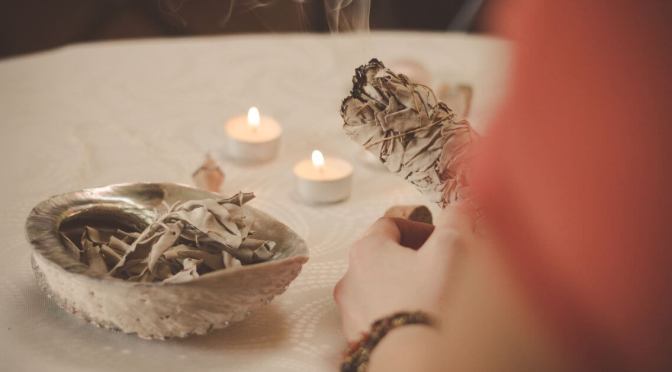
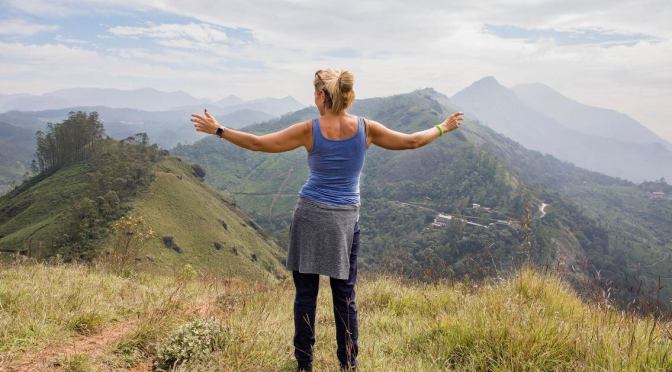

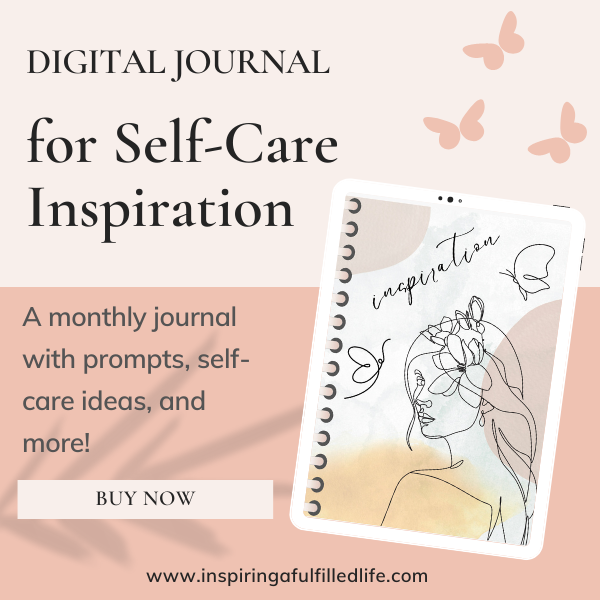

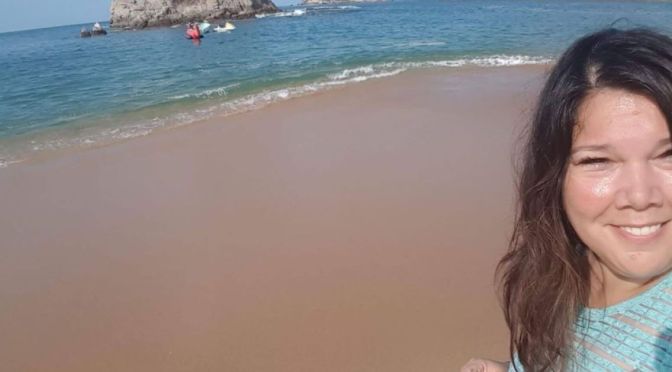

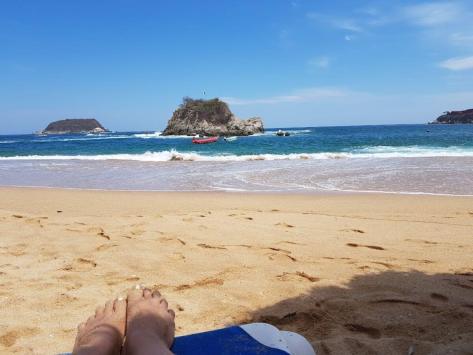












You must be logged in to post a comment.